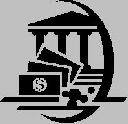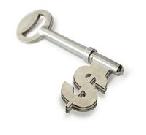
 |
|
| Financial Terms | |
| Realized compound yield |
|
Information about financial, finance, business, accounting, payroll, inventory, investment, money, inventory control, stock trading, financial advisor, tax advisor, credit.
Main Page: money, inventory control, credit, investment, financial advisor, payroll, finance, business, |
Definition of Realized compound yield
Realized compound yieldyield assuming that coupon payments are invested at the going market interest
Related Terms:Annual percentage yield (APY)The effective, or true, annual rate of return. The APY is the rate actually Bond equivalent yieldBond yield calculated on an annual percentage rate method. Differs from annual Bond-equivalent yieldThe annualized yield to maturity computed by doubling the semiannual yield. Capital gains yieldThe price change portion of a stock's return. Compound interestInterest paid on previously earned interest as well as on the principal. Compound optionOption on an option. CompoundingThe process of accumulating the time value of money forward in time. For example, interest  Compounding frequencyThe number of compounding periods in a year. For example, quarterly Compounding periodThe length of the time period (for example, a quarter in the case of quarterly Continuous compoundingThe process of accumulating the time value of money forward in time on a Convenience yieldThe extra advantage that firms derive from holding the commodity rather than the future. Coupon equivalent yieldTrue interest cost expressed on the basis of a 365-day year. Current yieldFor bonds or notes, the coupon rate divided by the market price of the bond. Discrete compoundingcompounding the time value of money for discrete time intervals. Dividend yield (Funds)Indicated yield represents return on a share of a mutual fund held over the past 12 Dividend yield (Stocks)Indicated yield represents annual dividends divided by current stock price.  Earnings yieldThe ratio of earnings per share after allowing for tax and interest payments on fixed interest Effective annual yieldAnnualized interest rate on a security computed using compound interest techniques. Equivalent bond yieldAnnual yield on a short-term, non-interest bearing security calculated so as to be Equivalent taxable yieldThe yield that must be offered on a taxable bond issue to give the same after-tax Flattening of the yield curveA change in the yield curve where the spread between the yield on a long-term High-yield bondSee:junk bond. Indicated yieldThe yield, based on the most recent quarterly rate times four. To determine the yield, divide Liquid yield option note (LYON)Zero-coupon, callable, putable, convertible bond invented by Merrill Liquid yield option note (LYON)Zero-coupon, callable, putable, convertible bond invented by Merrill Lynch & Co. Non-parallel shift in the yield curveA shift in the yield curve in which yields do not change by the same Parallel shift in the yield curveA shift in the yield curve in which the change in the yield on all maturities is Pure yield pickup swapMoving to higher yield bonds. Realized returnThe return that is actually earned over a given time period. Relative yield spreadThe ratio of the yield spread to the yield level. Reoffering yieldIn a purchase and sale, the yield to maturity at which the underwriter offers to sell the bonds Required yieldGenerally referring to bonds, the yield required by the marketplace to match available returns Riding the yield curveBuying long-term bonds in anticipation of capital gains as yields fall with the Simple compound growth methodA method of calculating the growth rate by relating the terminal value to Steepening of the yield curveA change in the yield curve where the spread between the yield on a long-term Weighted average portfolio yieldThe weighted average of the yield of all the bonds in a portfolio. YieldThe percentage rate of return paid on a stock in the form of dividends, or the effective rate of interest Yield curveThe graphical depiction of the relationship between the yield on bonds of the same credit quality Yield curve option-pricing modelsModels that can incorporate different volatility assumptions along the Yield curve strategiesPositioning a portfolio to capitalize on expected changes in the shape of the Treasury yield curve. Yield ratioThe quotient of two bond yields. Yield spread strategiesStrategies that involve positioning a portfolio to capitalize on expected changes in Yield to callThe percentage rate of a bond or note, if you were to buy and hold the security until the call date. Yield to maturityThe percentage rate of return paid on a bond, note or other fixed income security if you Yield to worstThe bond yield computed by using the lower of either the yield to maturity or the yield to call dividend yield ratioCash dividends paid by a business over the most Bond Equivalent YieldBond yield calculated on an annual percentage rate method Compound InterestInterest paid on principal and on interest earned in previous Continuous CompoundingThe process of continuously adding interest to a principal plus Discrete CompoundingThe process of adding interest to a principal plus interest amount Effective Annual YieldAnnualized rate of return on a security computed using compound Yield CurveA graphical representation of the level of interest rates for Yield to MaturityThe measure of the average rate of return that will be earned on a compound interesta method of determining interest in which interest that was earned in prior periods is added to the original investment so that, in each successive period, interest is earned on both principal and interest compounding periodthe time between each interest computation labor yield variance(standard mix X actual hours X standard rate) - (standard mix X standard hours X standard rate); material yield variance(standard mix X actual quantity X standard price) - (standard mix X standard quantity X standard price); process quality yieldthe proportion of good units that resulted from the activities expended realized value approacha method of accounting for byproducts or scrap that does not recognize any value for these products until they are sold; the value recognized yieldthe quantity of output that results from a specified input yield ratiothe expected or actual relationship between input and output Par yield curveThe yield curve of bonds selling at par, or face, value. Spot curve, spot yield curveSee Zero curve. Yield a. Measure of return on an investment, stated as a percentage of price. Yield curveGraph of yields (vertical axis) of a particular type of security Yield to maturityA measure of the average rate of return that will be earned Zero curve, zero-coupon yield curveA yield curve for zero-coupon bonds; Production yield varianceThe difference between the actual and budgeted proportions compound interestInterest earned on interest. current yieldAnnual coupon payments divided by bond price. yield curveGraph of the relationship between time to maturity and yield to maturity. yield to maturityInterest rate for which the present value of the bond’s payments equals the price. Current YieldThe percentage return on a financial asset based on the current price of the asset, without reference to any expected change in the price of the asset. This contrasts with yield-to-maturity, for which the calculation includes expected price changes. See also yield. YieldThe interest rate that makes the present value of a stream of future payments associated with an asset equal to the current price of that asset. Also called yield to maturity. See also current yield. Yield curveA graph showing how the yield on bonds varies with time to maturity. Realized Gains and LossesIncreases or decreases in the fair value of an asset or a liability that Realized RevenueA revenue transaction where goods and services are exchanged for cash or Compound InterestInterest earned on an investment at periodic intervals and added to principal and previous interest earned. Each time new interest earned is calculated it is on a combined total of principal and previous interest earned. Essentially, interest is paid on top of interest. compoundingWhen an asset generates earnings that are then reinvested and generate their own earnings. Related to : financial, finance, business, accounting, payroll, inventory, investment, money, inventory control, stock trading, financial advisor, tax advisor, credit. |